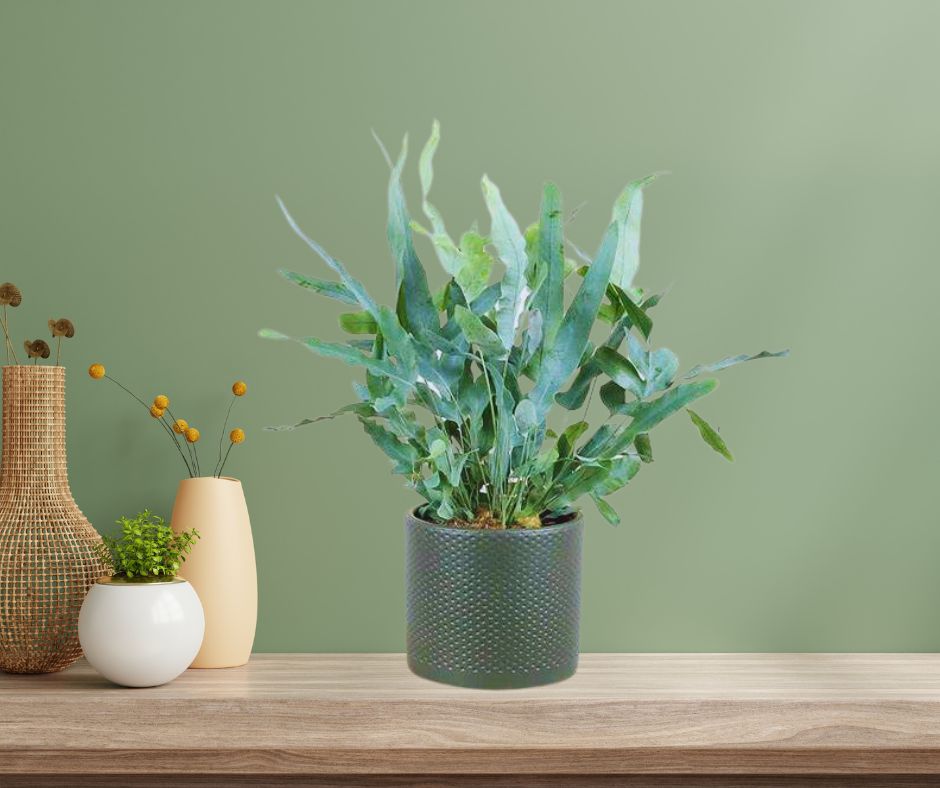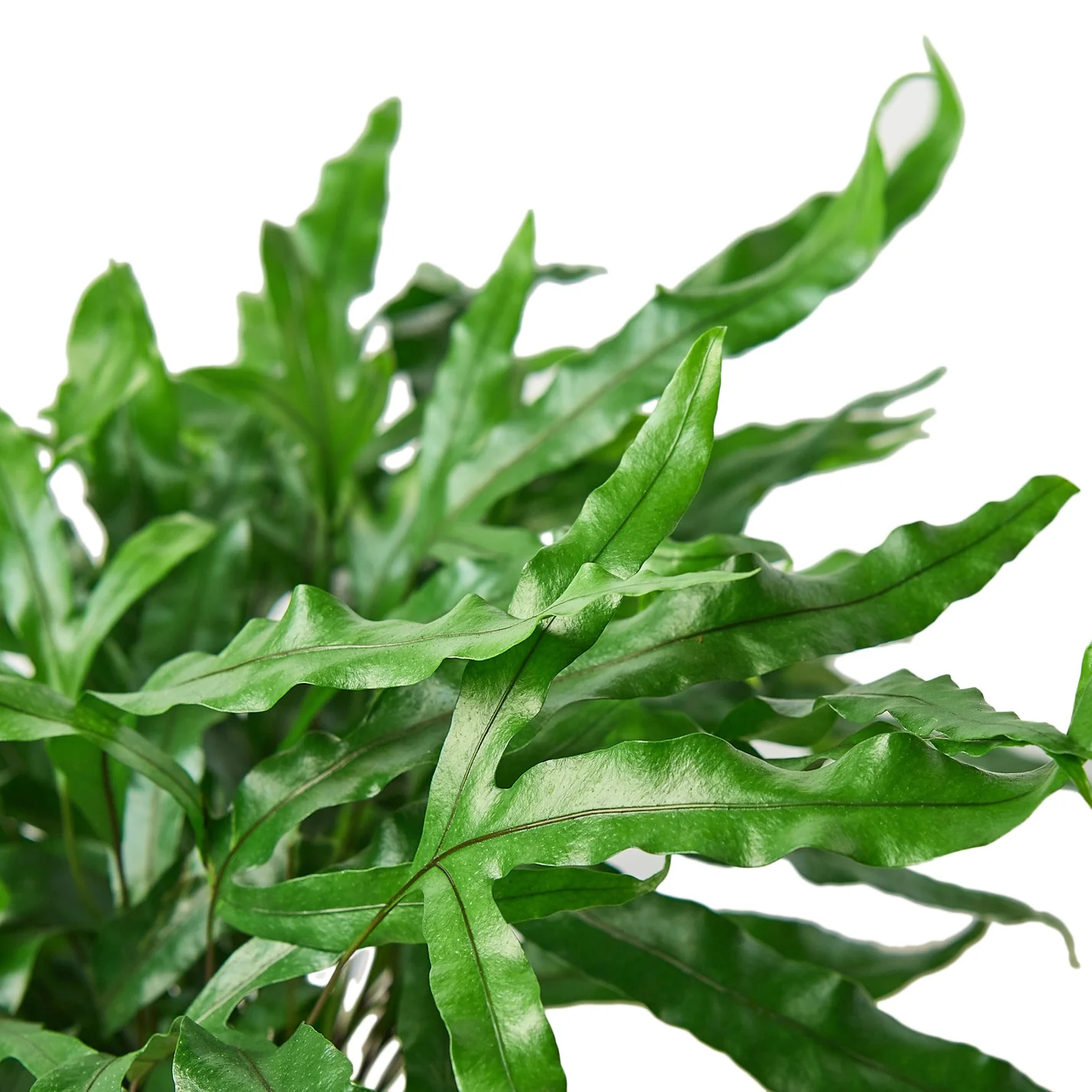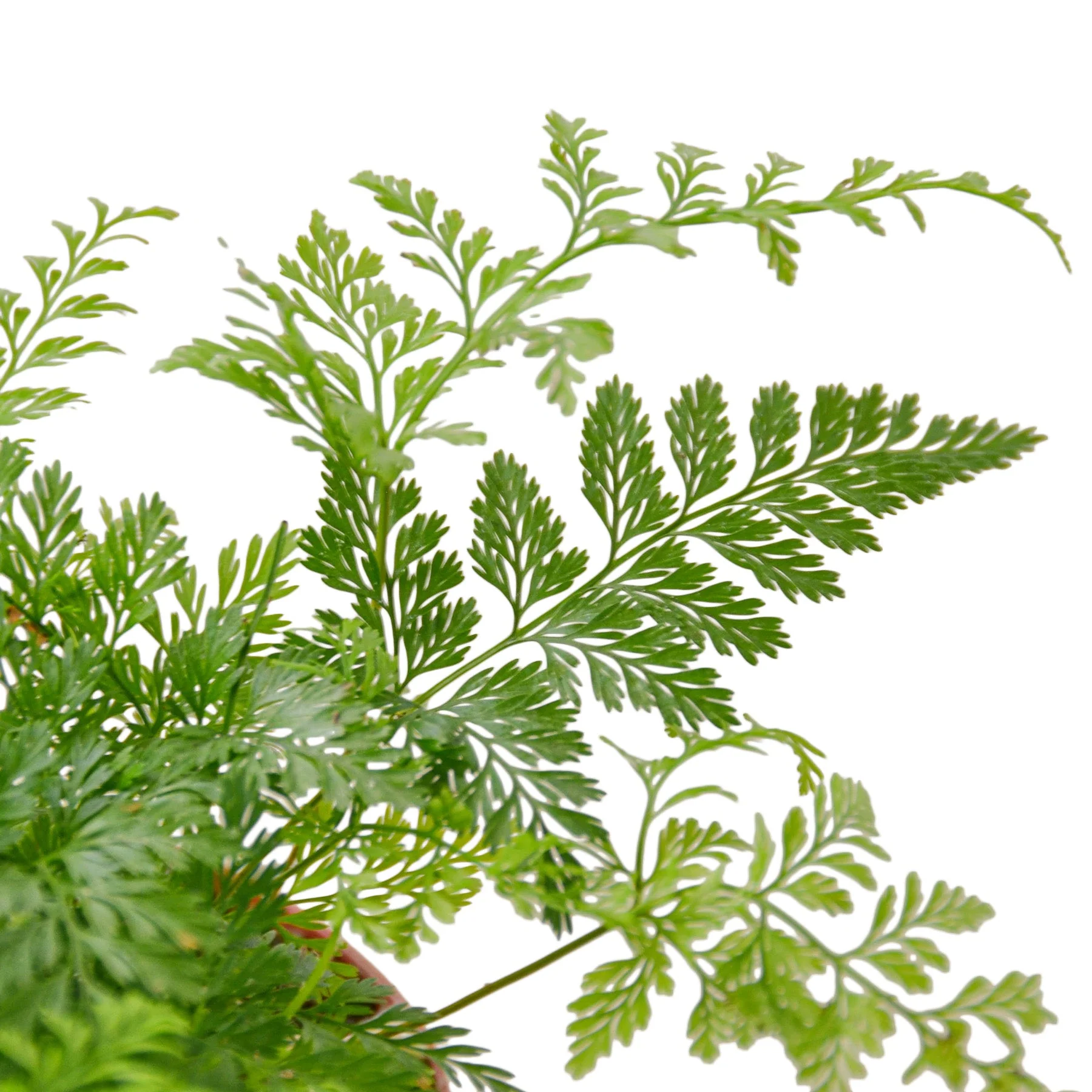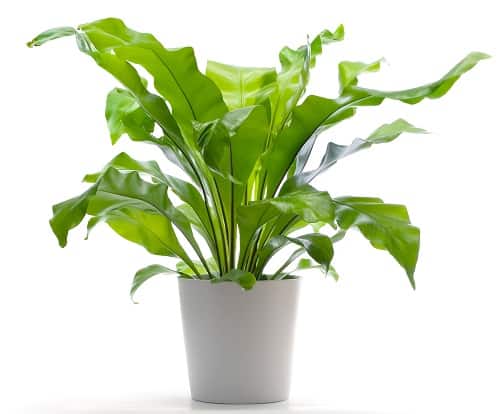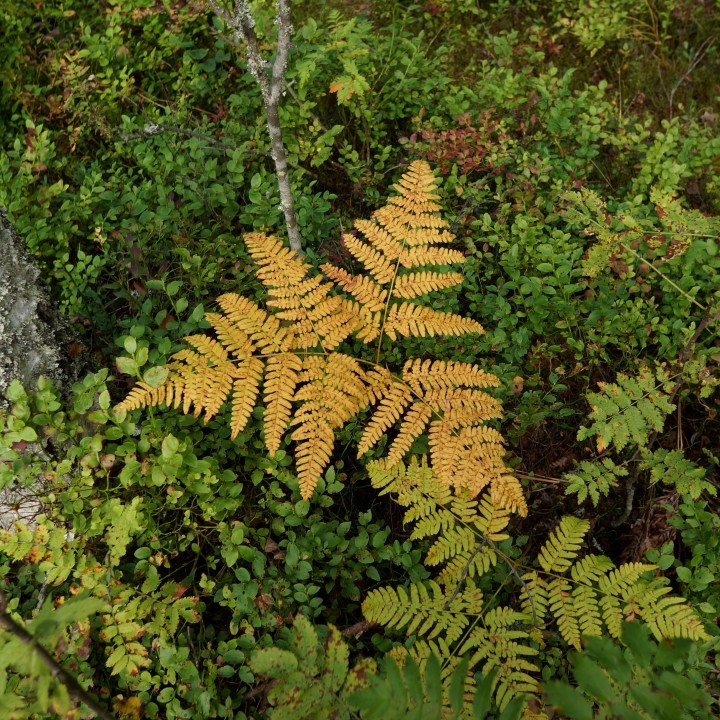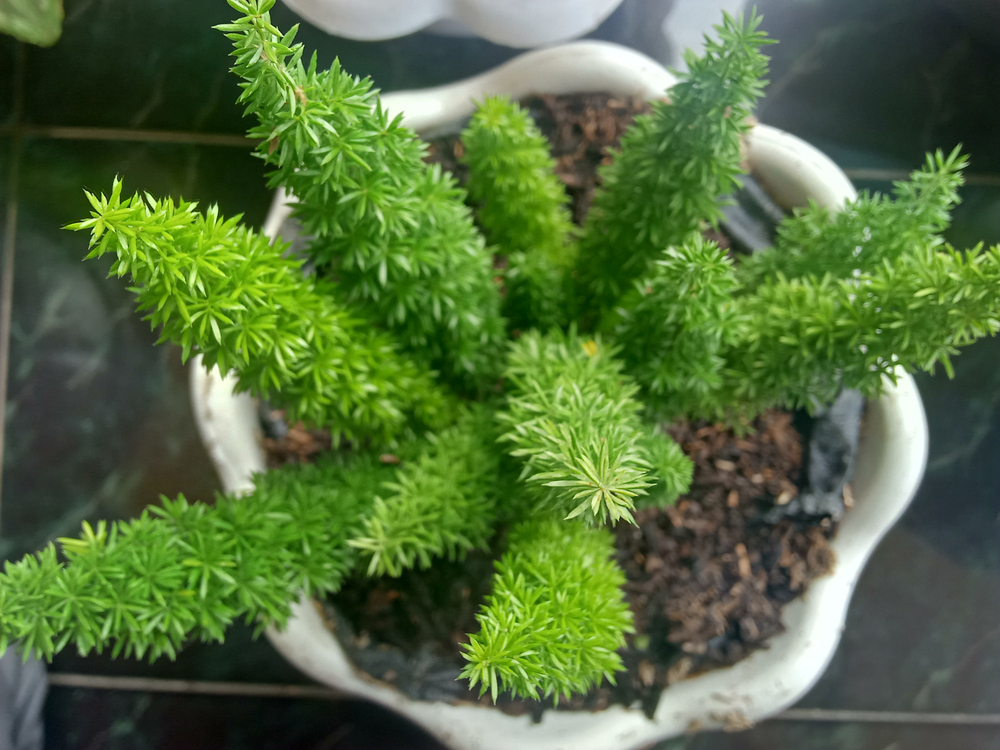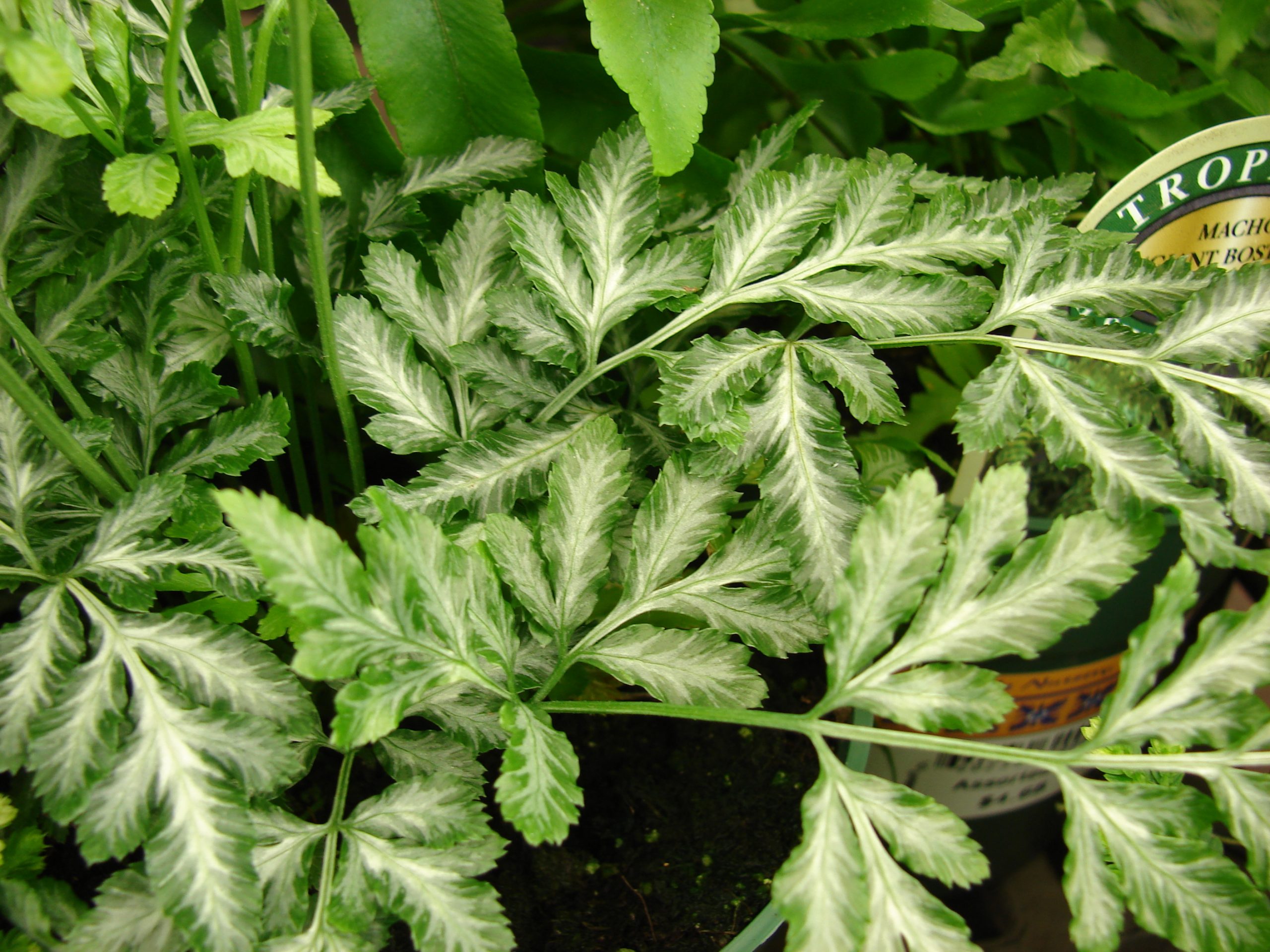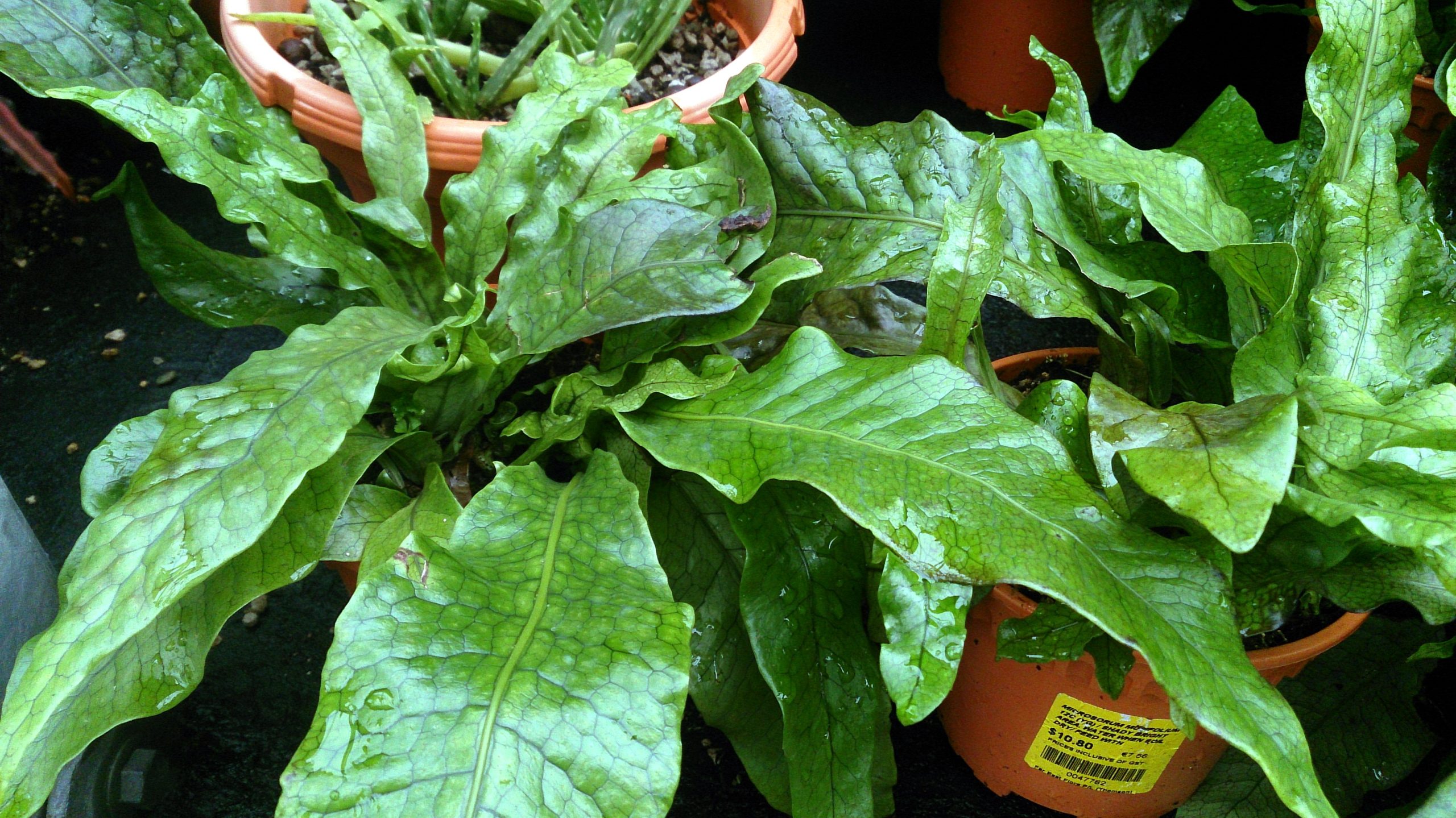HousePlantJoy is supported by our audience. When you purchase through one of our links, we may earn a small affiliate commission. As an Amazon Associate I earn from qualifying purchases. Your cost is not affected.
==================
Let’s take a look at the best ferns for indoors. We’ll explore each variety in detail, celebrating their unique traits and features. Get ready to meet stars like the Boston Fern with its arching, bright green fronds. Discover the peculiar Asparagus Fern – which, surprise, surprise, is not a true fern!
But we won’t stop there. We’ll dig into their preferred growing conditions. And let’s unveil the secret to nurturing these beauties indoors. You’ll learn how most ferns are fans of indirect light, moist soil, and high humidity. Plus, we’ll share practical tips to prevent common issues like root rot.
So, if you’re a simple plant parent and expanding your houseplant collection, this guide is for you. Hold onto your watering cans. Our exploration of the fascinating world of indoor ferns is about to begin! Enjoy reading!
Why Indoor Ferns Make Perfect Houseplants
Ferns are like a breath of fresh air in our homes, aren’t they? But have you ever wondered what makes them ideal indoor buddies? Let’s explore!
Most ferns have a thing for medium light. They aren’t big fans of direct sunlight or being left in the dark. Instead, they prefer a sweet spot in between – bright indirect light. That’s perfect for indoors. Most of our homes get that light, making ferns an easy fit.
Now, here’s a fun fact about ferns. They’re originally from the forest floor, so they’re used to hanging out in the shadow of larger trees. This means they’re pretty happy with indirect light, similar to what they get in their natural habitat. So, if you’ve got a spot that gets a lot of natural light but is shielded from the sun’s direct rays, that’s your fern’s new home!
What else? Oh yes, humidity! Most ferns love a good dose of high humidity. They’re used to warm temperatures and moist environments. That’s why they thrive in places like bathrooms where the air can get steamy. But don’t worry if your house isn’t naturally humid. A simple humidifier or a dish with water near the plant can work wonders.
Indoor ferns are usually evergreen ferns. This means they keep their bright green leaves all year round. This constant green splash can delight during long, cold winters. It’s like having a tiny piece of the tropics inside your home!
Best Ferns for Indoors
Boston Fern
Let’s kick off our ferny tour with one of the most popular indoor ferns – the Boston Fern. With its fluffy, arching fronds and bright green leaves, this one is a real eye-catcher. And guess what? It’s pretty easy to care for, too!
Boston Ferns love medium light. This means they like bright, indirect light. So, find a nice spot near a window that doesn’t get direct sunlight. Excessive sunlight can cause the leaves to turn yellow – and we don’t want that!
But that’s not all. Boston Ferns also adore high humidity. Think of them like little green spa lovers! They love being misted with water and thrive in steamy rooms like bathrooms. A tray with water and pebbles near the plant can help if you don’t have a humid room.
When it comes to soil, Boston Ferns prefer it moist. They don’t like their roots drying out, so keep the soil damp but not soaking. Think of it like a squeezed-out sponge – moist but not dripping wet. This way, you can prevent root rot.
Oh, and here’s a bonus tip. Boston Ferns make stunning hanging baskets. Their arching fronds can show off when they’re allowed to drape down. Plus, they add a unique vertical element to your space!
Kangaroo Fern
The Kangaroo Fern has bright green, leathery fronds that remind us of a kangaroo’s paw. Its fronds are strappy and have a bit of a curl, which adds a fun twist to any space.
Like the Boston Fern, Kangaroo Ferns enjoy bright indirect light. They prefer to avoid direct sunlight, which can cause their lovely green leaves to scorch. So, a spot that receives a good dose of filtered sunlight would be perfect!
Regarding moisture, these ferns prefer their soil to be consistently damp. Watering them regularly is essential, but avoid making their ground soggy to prevent root rot. Remember the squeezed-out sponge? That’s the level of dampness you’re aiming for!
One more thing to remember: Kangaroo Ferns enjoy a bit of humidity. If the air around them is too dry, their fronds may start to brown at the edges. So, please provide them with a humid environment or occasionally mist them with water.
Staghorn Fern
Staghorn Ferns are named for their long, flat, antler-like fronds. It resembles a stag’s horns. Interesting, right? They bring a touch of the wild right into our living rooms. And the best part? They are pretty low-maintenance, making them great for busy plant parents.
Philipp Michel Reichold, CC BY-SA 4.0 <https://creativecommons.org/licenses/by-sa/4.0>, via Wikimedia Commons
Staghorn Ferns enjoy bright, indirect light. But they can also handle a bit of partial sun. Remember to shield them from harsh, direct sunlight, which can damage their beautiful green fronds.
Unlike many ferns, Staghorn Ferns are epiphytes. This means they grow on trees, not in the soil. So, they love being mounted on a piece of wood or in a hanging basket. And here’s an excellent tip: use sphagnum moss as a base to mimic their natural habitat.
When it comes to watering, these ferns like their roots to be moist. So, you can give them a good soak, then allow them to dry out before watering again. This helps to prevent root rot.
Rabbit’s Foot Fern
Rabbit’s Foot Ferns are a hit among fern lovers for their soft, feathery fronds and unique, furry roots. These roots, or ‘rhizomes,’ even creep over the edge of the pot, giving the plant a playful look.
When it comes to lighting, these ferns, like most indoor ferns, enjoy bright, indirect light. So, a spot near a north or east-facing window would be perfect. But be careful – excessive direct sunlight can scorch their delicate fronds.
The soil for the Rabbit’s Foot Fern needs to be well-draining. These ferns like their soil to be consistently moist but never soggy. Remember, the aim is to prevent root rot!
And about those furry roots – they like a bit of misting now and then. They absorb moisture from the air, so a quick water spray keeps them happy. And speaking of moisture, these ferns do appreciate high humidity. So a kitchen or bathroom could be a perfect spot!
Bird’s Nest Fern
Bird’s Nest Ferns have broad, flat fronds that are light green. The fronds have wavy edges, making the plant look fun and textured. And the ‘nest’ in the middle is where the new leaves emerge.
This fern loves bright, indirect light. A north or east-facing window would be perfect. And like the other ferns we’ve met, direct sunlight is a no-no. It can burn the leaves of this fern.
As for watering, the Bird’s Nest Fern likes its soil to be consistently moist. But be careful while watering. Avoid getting water in the ‘nest’, which can lead the plant to rot.
And remember the humid environment our fern friends love? Well, the Bird’s Nest Fern is no different! It loves high humidity. But don’t worry if your house isn’t naturally humid. A quick misting or a pebble tray filled with water can help increase the moisture in the air.
Autumn Fern
When the fronds of the Autumn Fern first emerge, they are a beautiful coppery-red color. As they mature, they transform into a dark green, giving the plant a lovely two-toned effect. Now, isn’t that something special?
Like our other indoor fern friends, the Autumn Fern enjoys bright, indirect light. Too much direct sunlight can cause the beautiful leaves to fade, and we certainly don’t want that. So, a spot with filtered sunlight would be perfect!
As for watering, Autumn Ferns like their soil to stay consistently moist. They’re not fans of dry soil, so regular watering is important. Please remember to avoid soggy soil to prevent root rot.
Autumn Ferns also enjoy a humid environment. So, just like our other ferns, they’ll appreciate a misting or a pebble tray with water. And one more thing, they’re also evergreen ferns! This means they keep their lovely fronds all year round.
Asparagus Fern
Guess what? Our next friend, the Asparagus Fern, isn’t a true fern! But it’s loved so much that we couldn’t leave it off our list. Despite its name, the Asparagus Fern is a member of the lily family. How’s that for a plot twist?
The Asparagus Fern has feathery, needle-like leaves and can grow quite large. Its long, arching fronds make it perfect for hanging baskets or as a plant on a shelf or tabletop. This plant loves bright, ambient light but can handle medium light too. Just to remind you, direct sunlight is a no-no. It can cause the leaves to turn yellow.
When it comes to watering, Asparagus Ferns like their soil moist. So regular watering is a good idea. But be careful not to overdo it! Too much water can cause root rot. And let’s remember humidity. Even though it’s not a true fern, the Asparagus Fern still loves a humid environment. So, don’t hesitate to give it a good misting!
Blue Star Fern
Meet a fern that’s got a cool twist. The Blue Star fern gets its name from the bluish-green color of its fronds. They create a beautiful contrast in your indoor fern collection.
The Blue Star Fern’s fronds are leathery and often have a silver-blue hue. This unique color gives the fern its name and differentiates it from other indoor ferns.
In terms of lighting, this fern can handle a range of conditions. It can accept lower light levels than many ferns but prefers bright, indirect light for the best growth. As always, please keep it away from harsh, direct sunlight.
When it comes to watering, the Blue Star Fern prefers its soil to be consistently moist. Like our other fern friends, avoid waterlogged soil to prevent root rot. One more thing: this fern enjoys high humidity. But it’s also more forgiving than some other ferns if the air in your home is a bit dry.
Silver Lace Fern
Say hello to the Silver Lace Fern! This fern’s fronds have a delicate, lace-like pattern that looks just as elegant as it sounds.
Forest & Kim Starr, CC BY 3.0 <https://creativecommons.org/licenses/by/3.0>, via Wikimedia Commons
The Silver Lace Fern has feathery, delicate textured fronds with dark green leaves and silvery-white centers. This beautiful contrast gives this fern its name. And it adds a unique charm to any indoor plant collection.
Like other ferns, the Silver Lace Fern loves bright, indirect light. Excessive direct sunlight can damage the delicate fronds. So a place with filtered sunlight is the best.
When it comes to watering, this fern likes moist soil but not waterlogged. Keep the soil dry out completely between watering. And let’s remember the love ferns have for a humid environment. The Silver Lace Fern is no different. So, a daily misting or a pebble tray with water nearby can help create the humidity it needs.
Crocodile Fern
This fern is a standout with its unique leaf pattern that looks like crocodile skin. The Crocodile Fern has dark green fronds with a texture that mimics the scales of a crocodile. It’s interesting to look at and adds a touch of unique beauty to your fern collection.
Mokkie, CC BY-SA 4.0 <https://creativecommons.org/licenses/by-sa/4.0>, via Wikimedia Commons
As for lighting, like most ferns, the Crocodile Fern prefers bright, indirect light. Remember to keep it away from direct sunlight, which can scorch its beautiful leaves.
In terms of watering, it likes consistently moist soil. But be careful; it doesn’t like soggy soil. So, let’s prevent root rot by ensuring the water drains well. You might have guessed by now that this fern also loves a humid environment. So remember to provide it with extra humidity through regular misting or a pebble tray with water.
Wrapping It Up
Wow, we’ve seen lots of indoor ferns, right? We now know every fern brings something nice to our homes.
Having ferns indoors is great. Every type of fern has something fun about it. They have curved leaves, a bright green color, and they love damp air. And with some care, they can do well indoors.
Don’t forget; there are many more types of ferns to try. Maybe the Japanese Painted Fern, the Kimberly Queen Fern, or the Australian Sword Fern could be your next plant buddy!
So, to finish up, having ferns inside adds a bit of the outdoors to your home. They’re different and easy to look after. If you can make their surroundings like where they come from, your ferns will be happy and healthy.
Have fun with your ferns! Try out different types, see what works, and most of all, enjoy the green times. The world of ferns is big and amazing, so why not bring some of that amazement into your home?
See you next time, fern friends!
FAQs
Why are my indoor ferns turning brown?
This can happen if the air is too dry, there’s not enough light, or if the fern is underwatered. Most ferns prefer high humidity, bright indirect light, and moist soil.
Can ferns grow in low light?
Yes, many ferns can tolerate low light, but they do best in medium-light conditions. Remember, no direct sunlight. It can harm their leaves.
Can I keep my fern in a hanging basket?
Absolutely! Many indoor ferns, like the Boston Fern, look beautiful in hanging baskets. It allows their arching fronds to hang down and create a beautiful display.
What is the easiest fern to grow indoors?
The Bird’s Nest Fern and the Boston Fern are often recommended as easy ferns to grow indoors. They’re tolerant of many home conditions and are pretty forgiving for beginners.
Dive into the Enchanting World of Ferns!
Discover the most fascinating ferns and houseplants! Join us on Facebook, Instagram, and Twitter for beautiful photos, plant care tips, and a community that celebrates the joy of indoor gardening.
Facebook: https://www.facebook.com/houseplantjoyblog
Instagram: http://instagram.com/houseplantjoy20
Twitter: https://twitter.com/HouseplantJoy
Let’s nurture our green spaces together!
Read More
More Interesting Links


